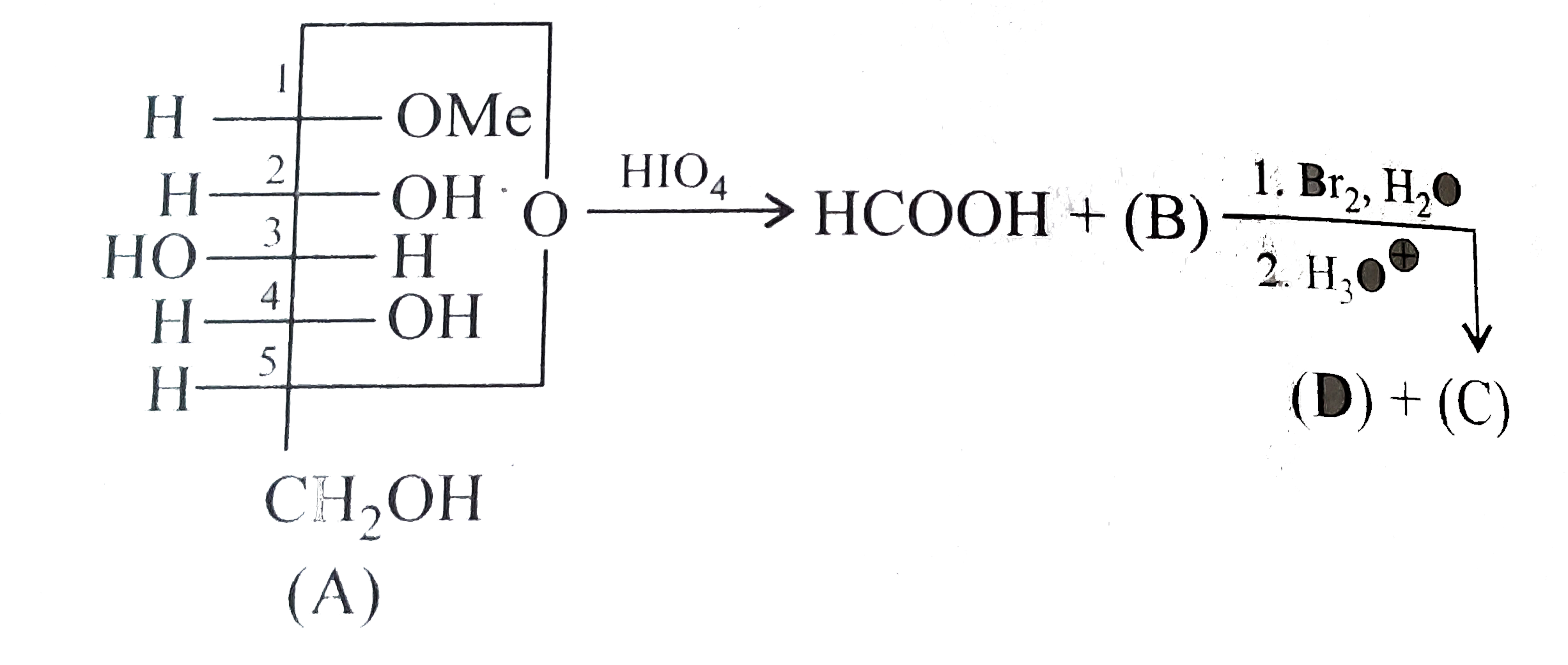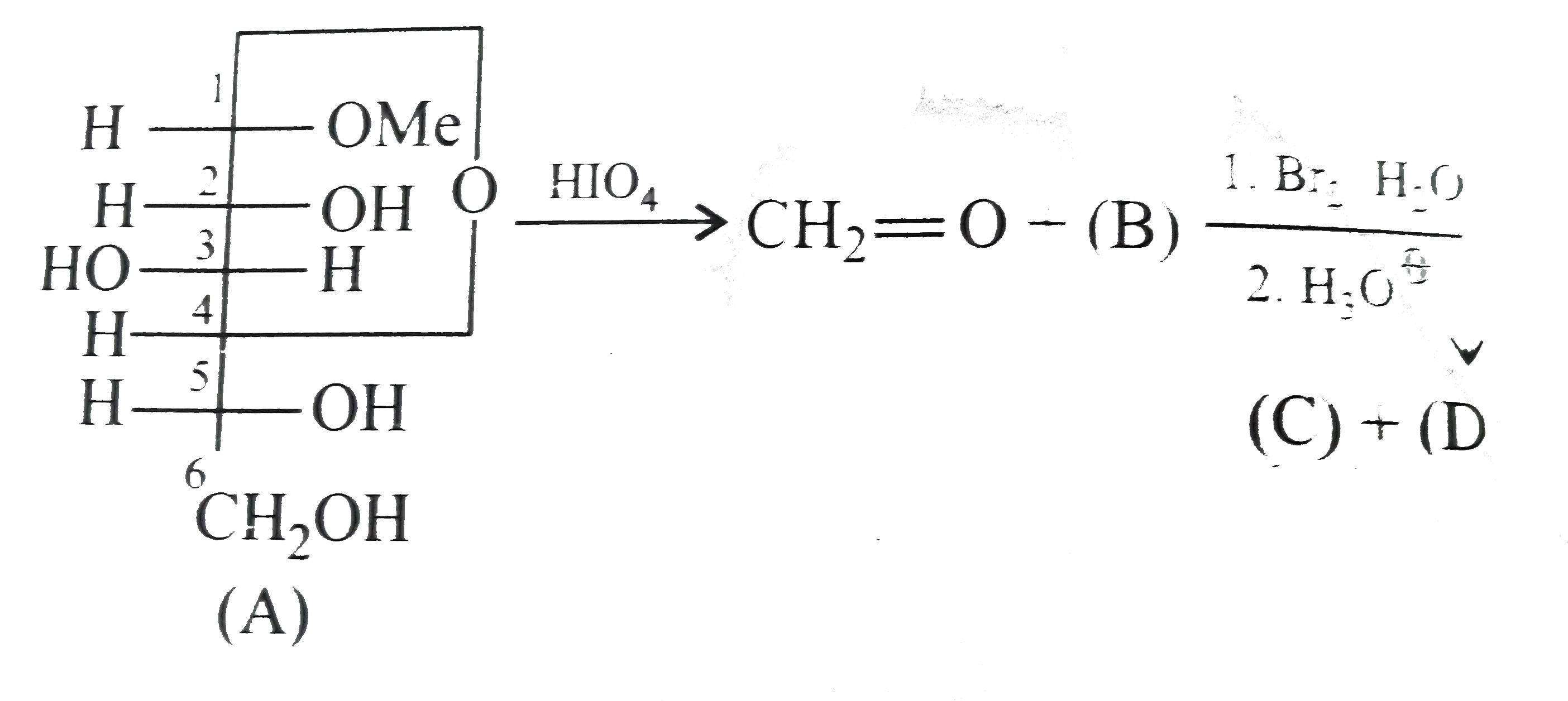In the hofmann-bromamide degradation reaction, the number of moles of NaOH and Br2 used per mole of amine produced are
Four moles of NaOH and one mole of Br2
one mole of NaOH and one mole of Br2
Four moles of NaOH and two moles of Br2
Two moles of NaOH and two moles of Br2
The correct Answer is:A
To solve the question regarding the Hofmann bromamide degradation reaction and determine the number of moles of NaOH and Br₂ used per mole of amine produced, we can follow these steps:
Step 1: Understand the Reaction
The Hofmann bromamide degradation reaction involves the conversion of primary amides into primary amines. The general reaction can be represented as:
RCONH2+Br2+4NaOH→RNH2+2NaBr+2H2O+Na2CO3
where RCONH2 is the primary amide and RNH2 is the primary amine produced.
Step 2: Identify Reactants and Products
In the reaction:
- Reactants: 1 mole of primary amide (RCONH₂), 1 mole of Br₂, and 4 moles of NaOH.
- Products: 1 mole of primary amine (RNH₂), along with by-products such as NaBr and water.
Step 3: Count Moles of Reactants Used
From the balanced equation:
- For every 1 mole of amine produced, 1 mole of Br₂ is required.
- For every 1 mole of amine produced, 4 moles of NaOH are required.
Step 4: Conclusion
Thus, the number of moles of NaOH and Br₂ used per mole of amine produced are:
- Br₂: 1 mole
- NaOH: 4 moles
Final Answer
The answer to the question is:
- 1 mole of Br₂ and 4 moles of NaOH are used per mole of amine produced.
The Hofmann bromamide degradation reaction involves the conversion of primary amides into primary amines. The general reaction can be represented as:
RCONH2+Br2+4NaOH→RNH2+2NaBr+2H2O+Na2CO3
where RCONH2 is the primary amide and RNH2 is the primary amine produced.
In the reaction:
- Reactants: 1 mole of primary amide (RCONH₂), 1 mole of Br₂, and 4 moles of NaOH.
- Products: 1 mole of primary amine (RNH₂), along with by-products such as NaBr and water.
From the balanced equation:
- For every 1 mole of amine produced, 1 mole of Br₂ is required.
- For every 1 mole of amine produced, 4 moles of NaOH are required.
Thus, the number of moles of NaOH and Br₂ used per mole of amine produced are:
- Br₂: 1 mole
- NaOH: 4 moles
The answer to the question is:
- 1 mole of Br₂ and 4 moles of NaOH are used per mole of amine produced.
Similar Questions
Knowledge Check
In Hofmann bromamide degradation reaction
R−O∣∣C−NH2+KOH+Br2→
intermediates are:ARCONHBrBRNCOCRNH2Dnone of these
For the reaction A+2B→C, 5 moles of A and 8 mole of B will produce
View SolutionFor the formation of terylene the number of moles of ehtylene glycol required per mole of terephthalic acid is
View SolutionDuring the oxidation of arsenite to arsenate ion in alkaline medium, the number of moles of hydroxide ions involved per mole of arsenite ion are
View SolutionStannous sulphate (SnSO4) and potassium permanganate are used as oxidising agents in acidic medium for oxidation of ferrrous ammnium sulphate to ferric sulphate. The ration of number of moles of stannous sulphate required per mole of ferrous ammonium sulphate to the number of moles of KMnO4 required per mole of ferrous ammonium sulphate, is:
View SolutionStannous sulphate (SnSO4) and potassium permanganate are used as oxidising agents in acidic medium for oxidation of ferrrous ammnium sulphate to ferric sulphate. The ration of number of moles of stannous sulphate required per mole of ferrous ammonium sulphate to the number of moles of KMnO4 required per mole of ferrous ammonium sulphate, is:
View SolutionCompound (X) on complete catalytic hydrogenation with H2/Pt gives an alkane. The number of moles of H2 required per mole of compound (X) is:
View SolutionFor the reaction, X+2Y→Z
5 moles of X and 9 moles of Y will produce:
View Solution


